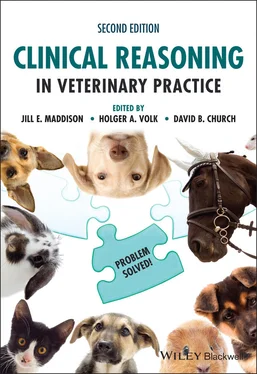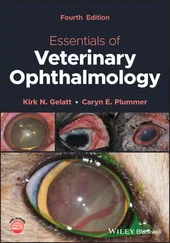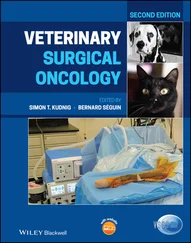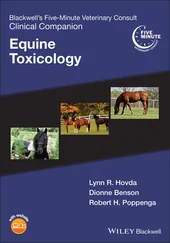Clinical Reasoning in Veterinary Practice
Здесь есть возможность читать онлайн «Clinical Reasoning in Veterinary Practice» — ознакомительный отрывок электронной книги совершенно бесплатно, а после прочтения отрывка купить полную версию. В некоторых случаях можно слушать аудио, скачать через торрент в формате fb2 и присутствует краткое содержание. Жанр: unrecognised, на английском языке. Описание произведения, (предисловие) а так же отзывы посетителей доступны на портале библиотеки ЛибКат.
- Название:Clinical Reasoning in Veterinary Practice
- Автор:
- Жанр:
- Год:неизвестен
- ISBN:нет данных
- Рейтинг книги:3 / 5. Голосов: 1
-
Избранное:Добавить в избранное
- Отзывы:
-
Ваша оценка:
- 60
- 1
- 2
- 3
- 4
- 5
Clinical Reasoning in Veterinary Practice: краткое содержание, описание и аннотация
Предлагаем к чтению аннотацию, описание, краткое содержание или предисловие (зависит от того, что написал сам автор книги «Clinical Reasoning in Veterinary Practice»). Если вы не нашли необходимую информацию о книге — напишите в комментариях, мы постараемся отыскать её.
Clinical Reasoning in Veterinary Practice: Problem Solved! 2nd Edition
Clinical Reasoning in Veterinary Practice: Problem Solved! 2nd Edition
Clinical Reasoning in Veterinary Practice — читать онлайн ознакомительный отрывок
Ниже представлен текст книги, разбитый по страницам. Система сохранения места последней прочитанной страницы, позволяет с удобством читать онлайн бесплатно книгу «Clinical Reasoning in Veterinary Practice», без необходимости каждый раз заново искать на чём Вы остановились. Поставьте закладку, и сможете в любой момент перейти на страницу, на которой закончили чтение.
Интервал:
Закладка:
On physical examination she is thin (body condition score 3/9). There is no evidence of abdominal discomfort. Rectal temperature is normal. Heart rate and respiratory rate are within normal limits, pulses are strong and synchronous.
Define the problem
Is Muriel vomiting or regurgitating or refluxing?
She is vomiting as evidenced by abdominal effort observed, lip licking indicating hypersalivation and bile in the vomitus.
Define the system
Does Muriel have primary or secondary GI disease?
Most indicators in this case suggest that the vomiting is due to secondary GI disease because:
The vomiting was preceded by 1–2 weeks of depression and reduced appetite.
The vomiting is usually intermittent and unrelated to feeding (although of
increasing frequency latterly).
This does not preclude primary GI disease but is more typical of secondary GI disease. Primary GI disease is less likely (although it cannot be completely excluded just yet).
Define the location
Where is the problem in the secondary GI system?
Secondary GI causes of vomiting of most relevance for Muriel include:
Hepatic disease
Hypoadrenocorticism
Chronic (but not acute) pancreatitis
Electrolyte perturbations due to various disorders (calcium, potassium).
Because polyuria and polydipsia are not features in this case (assuming the owner’s history is correct), other conditions, which are less likely (but not excluded yet), would be:
Renal disease
Diabetic ketoacidosis.
Primary GI disease is less likely (although it cannot be completely excluded just yet) and will be investigated if there is no evidence for secondary GI disease. GI neoplasia or inflammatory bowel disease would be the most likely differentials if primary GI disease is present.
Define the lesion
This will be determined when the location is identified.
Case outcome
The diagnostics planned assessed the differentials considered for secondary GI disease (define the location +/‐ lesion). Biochemistry results were consistent with presence of a significant hepatopathy, ultrasound examination supported diffuse parenchymal disease and histopathology on an ultrasound‐guided biopsy confirmed hepatocellular carcinoma.
CHAPTER 4 Diarrhoea
Jill E. Maddison 1and Lucy McMahon 2
1 Department of Clinical Science and Services, The Royal Veterinary College, London, UK
2 Anderson Moores Veterinary Specialists, Winchester, UK
The why
Veterinarians frequently assess animals with diarrhoea in general veterinary practice.
Many cases will be transient and respond to symptomatic management.
Those cases that are chronic can be a source of great frustration for all concerned.
A structured approach to diarrhoea, including classification of the type of diarrhoea, and a judicious mix of diagnostic tests and therapeutic trials can greatly improve the outcome.
Introduction and classification
Diarrhoea is a common clinical sign in animals presented to veterinarians in small animal practice. Similar to vomiting, the clinical consequences can range from insignificant to life threatening, although the latter is less common than the former. Many acute cases require little diagnostic intervention and resolve with or without symptomatic treatment. Chronic diarrhoea, however, can be a diagnostic challenge and the source of much frustration for the client and veterinarian. It is defined as diarrhoea that lasts for more than three weeks or intermittent diarrhoea over a period of one month or more. Animals can have chronic diarrhoea for months to years. Often, the animal may not be particularly unwell, and the diarrhoea may be chronic but intermittent and may respond partially but not entirely to different therapeutic interventions.
Diagnostic investigation of chronic diarrhoea can involve various procedures that range from the inexpensive to the expensive and the non‐invasive to the invasive. Unlike many clinical problems, therapeutic trials often play an important role in helping the clinician reach a probable diagnosis. However, trials need to be conducted logically and the outcomes reviewed critically.
The temptation to give multiple treatments aimed at different aetiologies in the hope that something will work is understandable. However, even if there is a positive response to multi‐modal therapy, if the diarrhoea recurs once treatment stops (as it often does), the clinician is no wiser about the underlying cause and how to manage the patient long term. Patience is needed by all parties, and excellent communication between the veterinarian and the client is imperative. The clinician needs to have a rational diagnostic and therapeutic approach to chronic diarrhoea in the dog and cat, and this will be dependent on the classification of the type of diarrhoea that is present and its potential causes.
Pathophysiology
Diarrhoea can be due to osmotic or secretory mechanisms, increased gut permeability or altered gut motility. Although many types of diarrhoea are due to more than one mechanism, an understanding of the mechanisms of diarrhoea facilitates a rational approach to its diagnosis and treatment.
In general, osmotic and secretory mechanisms occur with small bowel disorders, whereas increased permeability and altered motility can relate to both small and large bowel disorders. Altered motility occurs in most diarrhoeal diseases. However, primary motility disorders are very uncommon in dogs and cats.
Classification of diarrhoea
Although symptomatic therapy (or no therapy!) is appropriate for the majority of animals with acute diarrhoea, chronic diarrhoea does not usually respond to non‐specific symptomatic treatment and will often present the veterinarian with a diagnostic challenge where the more routine laboratory aids are not useful.
The diagnostic work‐up, differential diagnoses and therapy for small and large bowel diarrhoea may differ, although there are some causes common to both. Therefore, it is of utmost importance that before embarking on invasive diagnostic procedures or extensive therapy, an assessment is made as to whether the diarrhoea is:
Acute or chronic
Relatively mild or more severe, with the presence of secondary systemic effects
Small bowel or large bowel origin, or mixed
Due to primary or secondary gastrointestinal (GI) disease.
Failure to elicit sufficient information from the client about the characteristics of the diarrhoea, so as to allow appropriate classification as small bowel, large bowel or mixed, may result in inappropriate diagnostic procedures or therapeutic trials with increased expense to the client and frustration of the veterinarian and client.
 Define the problem
Define the problem
Diarrhoea is defined as an alteration in the normal pattern of defaecation, resulting in the passage of soft, unformed stools with increased faecal water content and/or increased frequency of defecation. It is important to consider the animal’s previous pattern of defecation, as the frequency of defaecation and the nature of faeces vary between individuals.
There are a few uncommon situations where it may not be obvious to the owner that his/her animal has diarrhoea. Occasionally, the owner may mistake anal or vaginal discharges for diarrhoea, or see vomitus on the floor and think it is diarrhoea. The patient with constipation may pass small amounts of liquid faeces, which the owner thinks is diarrhoea. Conversely, the patient who is straining to defaecate and attempting to defaecate frequently because of large bowel disease may be interpreted by the owner as being constipated. Therefore, it is important that the clinician is cognisant of these issues and aims to define the problem as a first priority in the consultation.
Читать дальшеИнтервал:
Закладка:
Похожие книги на «Clinical Reasoning in Veterinary Practice»
Представляем Вашему вниманию похожие книги на «Clinical Reasoning in Veterinary Practice» списком для выбора. Мы отобрали схожую по названию и смыслу литературу в надежде предоставить читателям больше вариантов отыскать новые, интересные, ещё непрочитанные произведения.
Обсуждение, отзывы о книге «Clinical Reasoning in Veterinary Practice» и просто собственные мнения читателей. Оставьте ваши комментарии, напишите, что Вы думаете о произведении, его смысле или главных героях. Укажите что конкретно понравилось, а что нет, и почему Вы так считаете.












